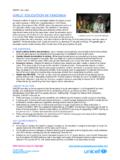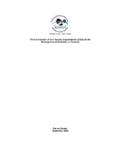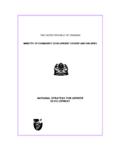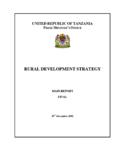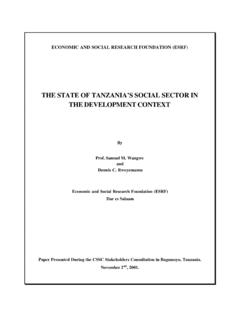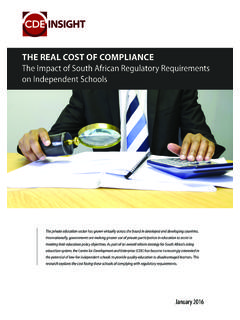Transcription of Tanzania Mainland country profile: gender …
1 Tanzania Mainland country profile . gender inequalities gender inequalities in rural employment in Tanzania An Overview in rural employment in Tanzania Mainland An Overview i Tanzania Mainland country profile . gender inequalities in rural employment in Tanzania Mainland An Overview By Martha Osorio, Monika Percic and Federica Di Battista FOOD AND AGRICULTURE ORGANIZATION OF THE UNITED NATIONS. Rome, 2014. RECOMMENDED CITATION. FAO, 2014. Tanzania Mainland country profile : gender inequalities in rural employment in Tanzania Mainland , an overview. Rome. COVER PHOTOS. Courtesy of Clara M. Park, FAO, and Patience Mutopo, Cologne Centre for African Studies, University of Cologne, Germany.
2 The designations employed and the presentation of material in this information product do not imply the expression of any opinion whatsoever on the part of the Food and Agriculture Organization of the United Nations (FAO) concerning the legal or development status of any country , territory, city or area or of its authorities, or concerning the delimitation of its frontiers or boundaries. The mention of specific companies or products of manufacturers, whether or not these have been patented, does not imply that these have been endorsed or recommended by FAO in preference to others of a similar nature that are not mentioned. The views expressed in this information product are those of the author(s) and do not necessarily reflect the views or policies of FAO.
3 The designations employed and the presentation of material in the map(s) do not imply the expression of any opinion whatsoever on the part of FAO concerning the legal or constitutional status of any country , territory or sea area, or concerning the delimitation of frontiers. FAO, 2014. FAO encourages the use, reproduction and dissemination of material in this information product. Except where otherwise indicated, material may be copied, downloaded and printed for private study, research and teaching purposes, or for use in non-commercial products or services, provided that appropriate acknowledgement of FAO as the source and copyright holder is given and that FAO's endorsement of users' views, products or services is not implied in any way.
4 All requests for translation and adaptation rights, and for resale and other commercial use rights should be made via or addressed to FAO information products are available on the FAO website ( ). and can be purchased through TABLE OF CONTENTS. TABLE OF CONTENTS .. III. LIST OF IV. ACKNOWLEDGMENTS .. VI. LIST OF ACRONYMS .. VII. EXECUTIVE SUMMARY .. VIII. 1. PART I: country OVERVIEW .. 2. DEMOGRAPHIC CONTEXT .. 2. ECONOMIC 7. LITERACY, EDUCATION AND EDUCATIONAL ATTAINMENT .. 9. PART II: POVERTY AND inequalities IN rural Tanzania Mainland .. 13. HOUSEHOLD CHARACTERISTICS AND 14. INCOME SOURCES .. 17. PART III: gender inequalities IN rural employment .. 20. LABOUR FORCE PARTICIPATION.
5 21. employment .. 21. SEASONALITY AND VISIBLE UNDEREMPLOYMENT .. 30. TIME USE .. 31. PART IV: gender PATTERNS IN FARMING .. 34. PART V: gender PATTERNS IN INTERNAL MOBILITY .. 39. KEY 42. CONCLUSION .. 44. METHODOLOGICAL NOTE .. 46. REFERENCES .. 51. iii LIST OF FIGURES. GRAPHS. Graph 1: Growth rate of population from 1960 to 2012 .. 3. Graph 2: rural -urban distribution of the population by region (in %) .. 4. Graph 3: Total population 5. Graph 4: Urban and rural population structure .. 6. Graph 5: Female-headed households by region .. 7. Graph 6: Literacy rates in urban and rural areas (men and women, in %) .. 10. Graph 7: Male and female primary and secondary enrolment ( rural and urban, in %).
6 11. Graph 8: Highest qualification attained by women and men aged 25 years and above ( rural and urban, in %).. 11. Graph 9: Average age of household head by expenditure quintile .. 15. Graph 10: Total dependency rates by household head and by expenditure quintile .. 15. Graph 11: Average number of household members in working age by expenditure quintile .. 16. Graph 12: Average years of education of the household head by expenditure quintile .. 16. Graph 13: Participation in rural labour activities .. 17. Graph 14: Share of income from different labour activities .. 18. Graph 15: Labour force participation of women and men in urban and rural areas (in %) .. 21. Graph 16: employment rate in urban and rural areas by sex (in %).
7 21. Graph 17: Age structure of the female and male working population ( rural and urban, by age groups) .. 22. Graph 18: Distribution of the employed population by educational attainment ( rural and urban, in %) .. 22. Graph 19: Main sector of employment of rural women and men (in %) .. 23. Graph 20: Average earnings for rural men and women by region in all employment types ( Tanzania Shillings).. 24. Graph 21: employment status of rural women and men (in %).. 25. Graph 22: Distribution of the earnings from self- employment in agriculture activities in rural areas by sex ( Tanzania Shillings) .. 26. Graph 23: Average weekly earnings of rural , self-employed (median) males and females by ( Tanzania Mainland ) regions ( Tanzania Shillings).
8 26. Graph 24: First and second job by industry for both men and women (in %) .. 28. Graph 25: First and second job by status (in %) .. 28. Graph 26: Industry and status of 2nd job by sex(in %).. 29. Graph 27: Frequency and duration by employment status and sex (in %) .. 30. Graph 28: Visible underemployment in rural areas by age groups (in %) .. 31. Graph 29: Women's and men's time devoted to productive activities (in %) .. 32. Graph 30: Share of male and female landholders by region (in %).. 36. Graph 31: Main crops by type and sex of farmers .. 37. Graph 32: Use of improved seeds by sex and type of activity of the holder (in %) .. 38. Graph 33: for migrating by sex and destination total population older than 14 (in %).
9 40. Graph 34: Reasons for migrating by sex and destination youth population (in %).. 40. Graph 35: Working reasons for migrating by sex for individuals aged 14 and above (in %).. 41. iv TABLES. Table 1: Distribution of urban and rural population ( Tanzania and Tanzania Mainland , in %) .. 4. Table 2: FGT measures of poverty for the rural population by sex of the head of the household (in %) .. 9. Table 3: Highest grade achieved for those not having completed primary education cycle (in %) .. 12. Table 4: Highest educational attainment in FHHs and MHHs ( rural and urban, in %) .. 12. Table 5 : Percentage incidence of poverty in Tanzania Mainland (poverty head count index, in %).
10 13. Table 6: RIGA classification of income sources .. 14. Table 7: Characteristics of rural households by expenditure quintiles .. 18. Table 8: Unpaid family workers in agriculture by age and educational attainment (in %) .. 27. Table 9: Average share of total hours in a week devoted to productive activities (main and second jobs) by male and female for all age groups (in %) .. 32. Table 10: Reproductive activities for employed males and females by age-category, total minutes per week .. 33. Table 11: Age of landholders by sex (in %) .. 36. Table 12: Use of inputs by sex of the farmer (in %) .. 37. Table 13: Number of working days of hired labour by sex of the farmer and of the labourer per season.











